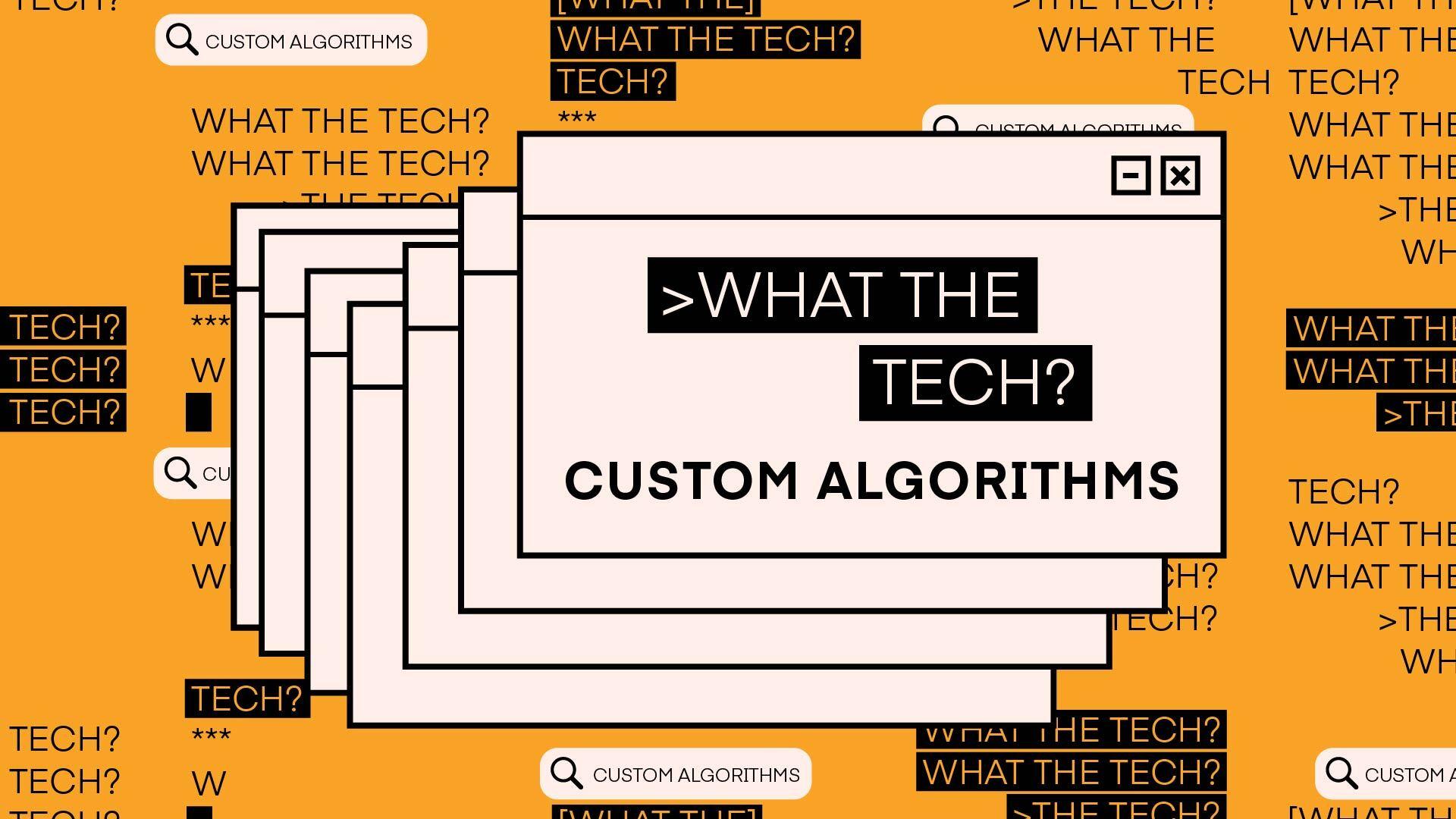What the Tech are custom algorithms?

Artificial intelligence might be all the rage right now due to ChatGPT and a host of AI-powered image-creation programs, but the advertising technology industry has been using AI for years. Media buyers and ad tech firms have deployed AI programs, such as machine learning, to refine targeting and tracking strategies with the goal of delivering a higher return on advertising spend (ROAS).
Custom algorithms are one of the most valuable AI applications in digital advertising. Here, we break down how they work, their uses, and why they provide so much value to marketers.
What is a custom algorithm?
To understand how a custom algorithm works, it first helps to understand how standard media buying algorithms work.
Brands and agencies plan and execute their digital advertising through demand-side platforms (DSPs), software portals that allow marketers to buy ads across a smattering of websites and connected TV platforms. DSPs have built-in algorithms that help customers determine when and where to place their ads, and at a price that ensures the highest ROAS possible.
But these algorithms are typically one-size-fits-all solutions. Custom algorithms, on the other hand, allow brands to tailor media buying decision-making to their unique goals and needs.
How does a custom algorithm work?
In order to use a custom algorithm, a market must first build one, and that’s a lengthy process.
A custom algorithm is designed to produce a specific result, and desired results in digital advertising vary from brand to brand.
Smaller challenger brands might be more concerned with tracking conversions because they have small advertising budgets and thus want to know their ad spend is producing tangible results. Larger, more established brands are typically less worried about immediate conversions, however, focusing instead on more sophisticated metrics — such as increasing the lifetime value of their customers, incremental sales produced by their advertising, and their market penetration among specific kinds of households.
Buying platforms’ algorithms are sophisticated, to be sure, but they’re not sophisticated enough to address these specific needs. So a brand may build one on its own, taking into account a host of factors, including viewability standards, ad exposure data on its audience, third-party accountability, and first-party data, such as the email addresses of existing customers. Custom algorithms can even take into account weather patterns and consumers’ voting histories, if available.
Why use a custom algorithm?
For one, it’s more effective. Anytime you can use an algorithm customized to a specific result, it's going to perform better than an off-the-shelf product.
That said, building one takes time, effort, and money. Deploying a custom algorithm requires hiring or partnering with someone sophisticated enough to build it, taking the time needed to create it from scratch with all the various inputs, and then deploying it for a campaign. Custom algorithms work better, but the high performance comes at a steep cost, and their usefulness can be short-lived. Market conditions are constantly in flux, so a custom algorithm can be quickly rendered obsolete if a brand’s goals change.
Which is why AI custom algorithms are increasingly popular.
How do AI custom algorithms work?
AI can significantly cut down the number of hours, workers, and money needed to create a custom algorithm. “It’s the difference between three months and 10 minutes,” says Adam Heimlich, CEO of Chalice, an ad tech company that uses AI to make custom algorithms for brands.
With AI-powered custom algorithms, brands outline the specific campaign goals they’re trying to achieve with a certain audience, and the ad tech firm — using AI — builds it for them in a fraction of the time it would typically take. “It used to require an entire server room to do the math on a custom algorithm,” Heimlich says. But advances in computing power, specifically cloud computing and AI, have drastically decreased the build time.
How can I use a custom algorithm?
Well, if you have the time and resources, you could tap in to your team of engineers, data analysts, and media buyers to build one in-house. Or you could use a service to do the process at a fraction of the time and cost.
AI-powered custom-algorithm firms often plug directly into DSPs, making the deployment of the algorithm that much easier.
This streamlined approach allows brands to use custom algorithms more often, which can lead to cutting down on wasted ad spend and increasing the value of their budgets.
Subscribe to The Current
Subscribe to The Current newsletter